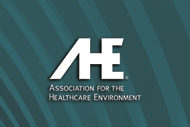We did not all go to college thinking we would graduate to become environmental services (ES) managers or supervisors. We somehow advanced into this great profession by starting in a part-time housekeeping job or went to school for some other type of management.
I had gone to school to learn hotel, restaurant and institutional management and wanted to work on a cruise ship. When I found out that I needed to have a talent like singing or dancing to work on a cruise ship, I quickly realized it was not an option.
During my senior year of college, I interviewed for a facilities management position in a hospital, which in ES terms meant housekeeping supervisor. I was prepared for some aspects of the job, but soon realized that there would be a lot of on-the-job training. I was at my first hospital for six years, then got my first position as an ES director in a long-term care setting. Once again, I received a lot of on-the-job training. I soon became familiar with the Certified Healthcare Environmental Services Professional (CHESP) exam and certification. I took the practice exam, but did not pass it.
I soon moved into an ES director position in a hospital. I found myself involved in the environment of care, infection prevention and the hospital budgeting process. I was gaining a lot of practical knowledge in our field and had been through a few tough inspections at this point in my career. Again, I decided to take the CHESP exam, this time passing with a high score.
Throughout my career, I have attended many AHE conferences and started to value all of the education that our profession offers. I also found it an honor to have the letters “CHESP” behind my name.
This is something that we did not always have and we should value it. I recently visited with a hospital manager I had never met before who asked me, “What are your credentials?” I proudly answered, “I am a Certified Healthcare Environmental Services Professional with 21 years of health care environmental services experience.” I was so happy that I actually had earned credentials.
I am so proud to be part of the ES profession, but feel that having the certification stresses the importance of the work that we do in health care facilities. My message to everyone today is that our profession is becoming more technical and more demanding. It is essential that we challenge ourselves to be the best in our field.
If you are already CHESP-certified, congratulations! Be sure to renew your certification every three years. If you are not a CHESP, I challenge you to go for it.
Lisa Ford, CHESP, is corporate environmental services director and Sodexo general manager of Our Lady of Lourdes Medical Center, Camden, N.J., and an AHE at-large board member.
Valuable resources available
AHE represents, defines and advances the professionals responsible for care of the health care environment to ensure high-quality outcomes and healthy communities. Following are a few of the resources that AHE offers.
• Recommended Practice Series: Environmental Services Equipment and Supplies. The equipment and supplies covered in this booklet are essential, discrete components of safe, efficient and productive environmental services (ES) operations. For more information, go to www.ahe.org/ahe/learn/tools_and_resources/publications.shtml.
• Practice Guidance for Healthcare Environmental Cleaning, second edition. This manual provides evidence-based research, guidance and recommended practices that should be considered for inclusion in health care ES departments. Because each health care facility has its own needs, this resource has been designed to enhance an existing program. To access it, log on to www.ahe.org/ahe/learn/tools_and_resources/publications.shtml.
• AHE Environmental Sustainability Certificate Program. AHE has launched a new certificate program to acknowledge the ongoing and outstanding environmental and ecological sustainability efforts of ES departments. For more program information, go to www.ahe.org/ahe/lead/environmental_sustainability_certificate_program.shtml.



